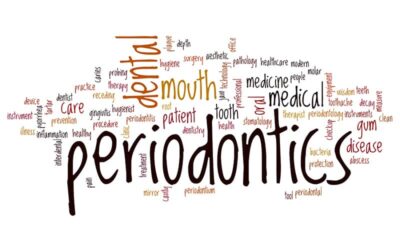Dental hygienists are oral health professionals responsible for preventing and treating oral diseases. These licensed healthcare professionals typically work under the supervision of dentists in dental offices.
Relevant CDT codes or procedure codes are available to report the services provided by dental hygienists. Dental offices as well as dental billing companies that provide dental coding services must be up to date with CDT coding updates.
Role of Dental Hygienists
Dental hygienists are an important part of a dentist-led team in general dental practices and in specialty practices such as periodontics or pediatric dentistry, as their work removes considerable burden from the dentist, freeing up the dentist to perform more advanced procedures. Hospitals, nursing homes and public health clinics also employ them to provide dental hygiene services for patients.
Services provided by dental hygienists may include performing patient screening procedures (assessment of oral health conditions, review of the health history, dental charting), counseling patients about good nutrition and its impact on oral health, preparing patients for dental surgery or procedures by administering anesthetics or applying periodontal dressings, applying preventive materials like sealants and fluorides to the teeth, taking and developing dental radiographs, removing calculus and plaque from all surfaces of the teeth, performing documentation and office management activities and more.
Since each state has its own specific regulations regarding their responsibilities, the range of services performed by dental hygienists varies from state to state.
CDT Codes for Dental Hygiene Services
CDT codes that fall under hygiene treatments are often related to radiographs, chemotherapeutics, sealants, fluoride and more. Codes for the services performed must be based on the patient’s diagnosis and individual needs.
D1110 Prophylaxis – Adult
D1110 cleaning code is used for a patient with calculus and bleeding, who hasn’t visited the dentist in five years.
D1110 code refers to “Removal of plaque, calculus, and stains from the tooth structures in the permanent and transitional dentition.”
This code is used to report a preventive procedure for patients who don’t yet have periodontal disease, and should only be used with patients who are periodontally healthy. The procedure includes scaling and polishing of all surfaces at or coronal to the cementoenamel junction (CEJ).
Two exceptions include those patients qualifying for
- D4355-Full Mouth Debridement to Enable Comprehensive Periodontal Evaluation and Diagnosis
- D4341-Periodontal Scaling and Root-Planing, per Quadrant
A prophylaxis is not payable with periodontal maintenance (D4910) or full-mouth periodontal scaling and root planing when rendered on the same day.
D1120: Prophylaxis – Child
D1120 code is used to report prophylaxis in children aged 13 or younger.
D1120 code refers to “Removal of plaque, calculus, and stains from the tooth structures in the primary and transitional dentition.”
A child prophylaxis involves primary and transitional dentition. While prophy codes are dentition specific, many plans are age specific. However, an adult prophylaxis cannot be replaced as a child prophylaxis in order to satisfy age limit constraints of a dental plan.
D4346: Removal of plaque, calculus, and stains
D4346 is “Scaling in presence of generalized moderate or severe gingival inflammation – full mouth, after oral evaluation”
This code is used to report
- the removal of plaque, calculus, and stains in a patient who has generalized (more than 30% of the mouth) moderate to severe inflammation (swollen, bleeding, inflamed gums, pseudopocketing)
- permanent, primary, or transitional dentition and there is no age limit
The procedure must be based on the diagnosis rather than intensity of treatment required.
According to the ADA, this code should not be reported in conjunction with prophylaxis, scaling and root planing, or debridement procedures.
D4355: Full mouth debridement
D4355 is used to report the procedure performed before the subsequent comprehensive evaluation simply to remove gross deposits from the tooth surface.
D4355 “Full mouth debridement to enable a comprehensive oral evaluation and diagnosis on a subsequent visit”.
This is a preliminary superficial removal of plaque and calculus. Polishing the teeth is an excellent first step when utilizing D4355 as it will remove surface plaque, biofilm and stain prior to instrumentation. Implementing a full mouth debridement for the purpose of completing an assessment and evaluation will be essential in generating an accurate diagnosis and developing an appropriate treatment plan.
A second visit would be scheduled for an exam and diagnosis, followed by the appropriate hygiene visit(s) for definitive treatment (prophy, scaling in the presence of moderate to severe inflammation, scaling and root planing).
D4341/ D4342 – Periodontal scaling and root planing
- D4341: 4 or more involved teeth in the quadrant
- D4342: 1 to 3 involved teeth in the quadrant
Periodontal scaling and root planing claims tend to have a higher frequency for denial than other procedures. These codes must be used right to avoid claim denials.
These codes are used for procedure that includes instrumentation of crown and root surfaces and is therapeutic. The code is used per quadrant.
It is ideal to report active periodontal disease (Clinical attachment loss/4 mm or greater pocketing, evidence of active disease such as bleeding, increasing pocket depths, evidence of continued attachment loss and radiographic calculus is NOT a requirement).
D4910: Periodontal maintenance
Periodontal maintenance is the therapeutic procedure following periodontal therapy. This procedure follows scaling and root planing, gingival flap surgery (D4240/4241), or osseous surgery (DD4260/4261).
This procedure continues for the life of the dentition. Periodontal maintenance is often denied, because many carriers have limited benefits for this procedure. To perform this procedure, hygienists must have knowledge of the patients’ prior periodontal history.
In cases where the patients’ benefits may have limits around coverage for this procedure, you are still legally bound to report what you did and code as such. A helpful narrative could say that if periodontal maintenance is denied, provide the alternate benefit of a prophylaxis.
In cases where you have a patient presenting with a history of periodontal disease, but it is not active at the time of visit, and there is no known history of scaling and root planing, osseous or flap surgery, you can use the D1110 code with the narrative that the patient received a prophy on a reduced periodontium.
To minimize claim denials for periodontal maintenance, the ADA recommends –
- If there are unusual circumstances that require a different interval of treatment than the one specified in the patient’s plan documents, the dentist should provide documentation with the original claim submission.
- If a patient is covered under a new group policy, submission of the patient’s history of treatment with the initial claim for D4910 will assist in the determination.
For accurate reporting of services provided by dental hygienists, dental offices can consider partnering with dental billing companies that formally train their coders on the changing CDT coding standards.




